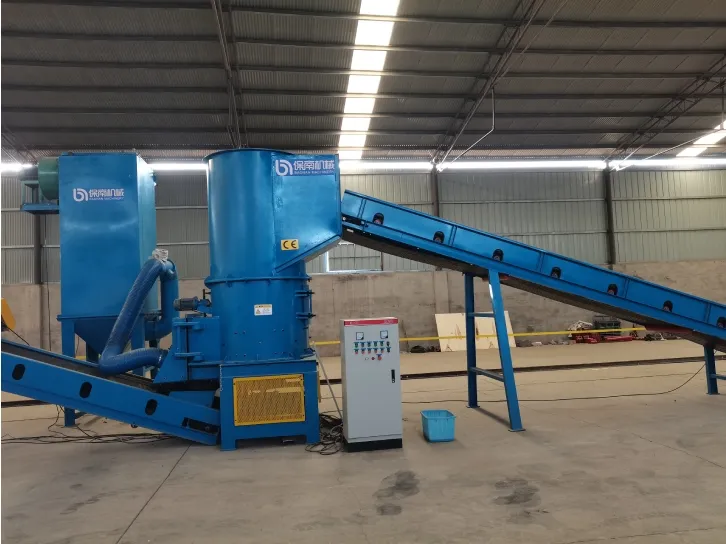

វិច្ឆិកា . 13, 2024 02:25 Back to list
Understanding Eddy Current Separators How They Work
Eddy current separators are innovative devices used primarily in the recycling industry to separate non-ferrous metals from other materials. These machines leverage the principles of electromagnetic induction to efficiently sort metals such as aluminum, copper, and brass from waste streams. Understanding how these separators operate can help industries optimize their recycling processes and improve overall efficiency.
The Principle of Eddy Currents
At the core of the eddy current separator's operation is the phenomenon known as eddy currents. When a conductor, such as a metal, is exposed to a changing magnetic field, it generates swirling currents known as eddy currents. These currents flow in circular patterns within the conductor and produce their own magnetic fields, which interact with the original magnetic field. This interaction creates forces that can either attract or repel the conductor from the source of the magnetic field.
Components of an Eddy Current Separator
An eddy current separator consists of several key components
1. Feeding Mechanism Material to be sorted is fed into the separator via a conveyor belt. 2. Rotating Magnet A central feature of the separator is a rotor with alternating magnetic poles that spins at high speeds. This rotor creates a rapidly changing magnetic field.
3. Conveyor Belt The conveyor moves the materials over the rotating magnet, helping to transport both the non-ferrous metals and other materials through the sorting process.
4. Discharge Chutes As materials pass over the rotor, the magnetic forces act upon them, and they are directed into separate chutes based on their properties.
The Separation Process
The separation process begins when mixed materials are introduced onto the conveyor belt. As these materials move toward the rotating magnet, different materials respond differently to the changing magnetic field. Non-ferrous metals experience the generation of eddy currents due to their conductive nature.

When non-ferrous metals enter the area influenced by the magnetic field, the eddy currents generated in these metals create a substantial magnetic force that interacts with the rotor's field. Depending on their charge, the eddy currents either push the metal upwards or pull it downwards, effectively separating it from non-metallic materials such as plastics, paper, or ferrous metals (which are attracted to a standard magnet).
Ferrous metals are typically removed before the eddy current separator since they can interfere with the separation process. This can be achieved using a magnetic drum separator, which captures ferrous materials before they enter the eddy current system.
Advantages of Eddy Current Separators
Eddy current separators offer several advantages in material recovery
1. High Efficiency They can achieve separation rates exceeding 90%, making them an effective choice for recycling operations.
2. Minimal Wear Unlike mechanical systems, eddy current separators have fewer moving parts subject to wear, resulting in lower maintenance costs.
3. Non-Ferrous Metal Recovery They are specifically designed for non-ferrous metals, providing a targeted approach to sorting and recovery.
4. Versatility These separators can be used for various applications, including municipal solid waste, scrap metal recycling, and electronic waste recovery.
Conclusion
Eddy current separators play a crucial role in modern recycling operations by efficiently separating non-ferrous metals from other materials. With their reliance on the principle of electromagnetic induction, these devices are not only effective but also durable and versatile. As industries continue to focus on improving recycling rates and recovering valuable materials, eddy current separators will undoubtedly be an integral part of the waste management landscape. Understanding how they work allows businesses to leverage this technology effectively, contributing to sustainable practices and a greener future.
Latest news
Troubleshooting Common Eddy Separator Problems
NewsJul.04,2025
The Role of Metal Recycling Plants in Circular Economy
NewsJul.04,2025
The Impact of Recycling Line Pickers on Waste Management Costs
NewsJul.04,2025
Safety Features Every Metal Shredder Should Have
NewsJul.04,2025
How Industrial Shredders Improve Waste Management Systems
NewsJul.04,2025
How Cable Granulators Contribute to Sustainable Recycling
NewsJul.04,2025